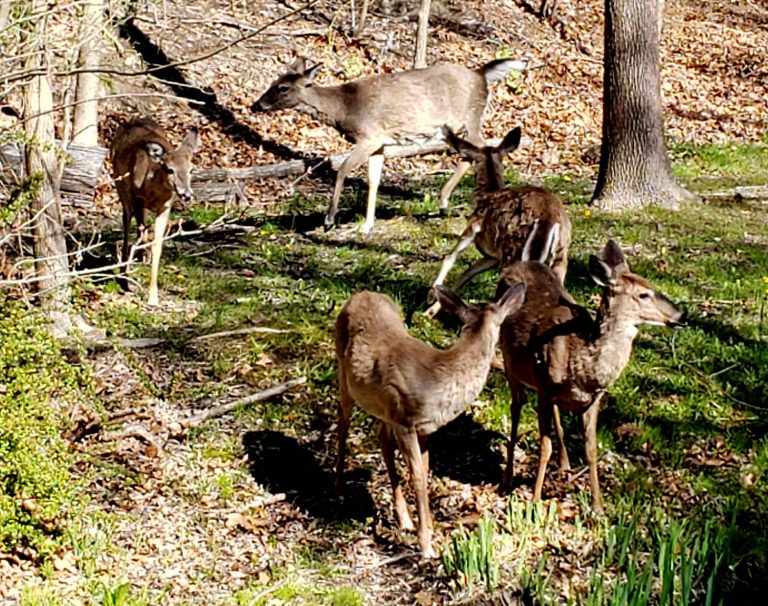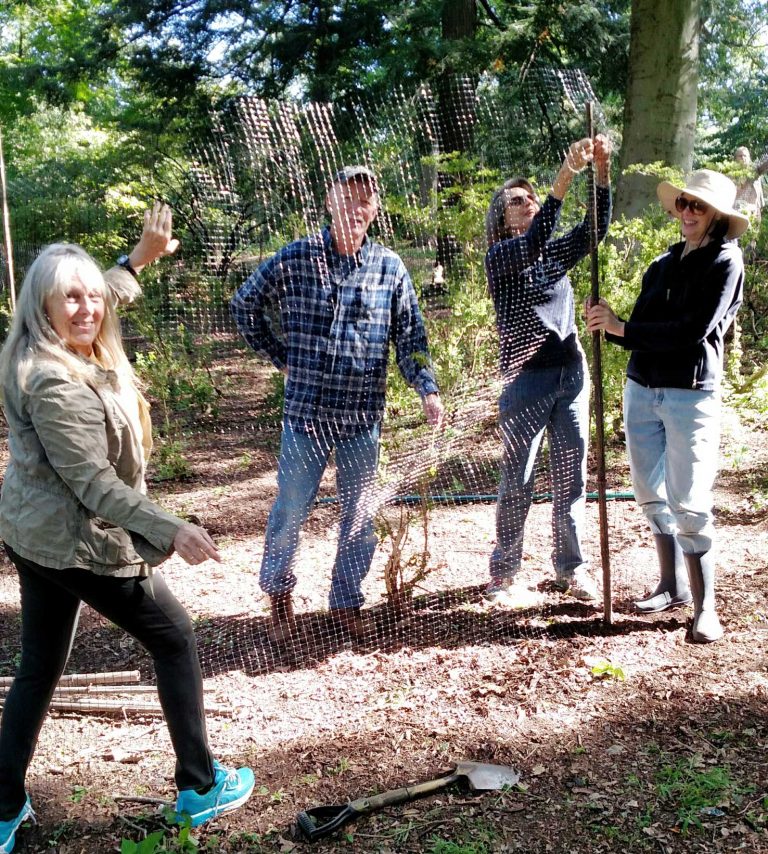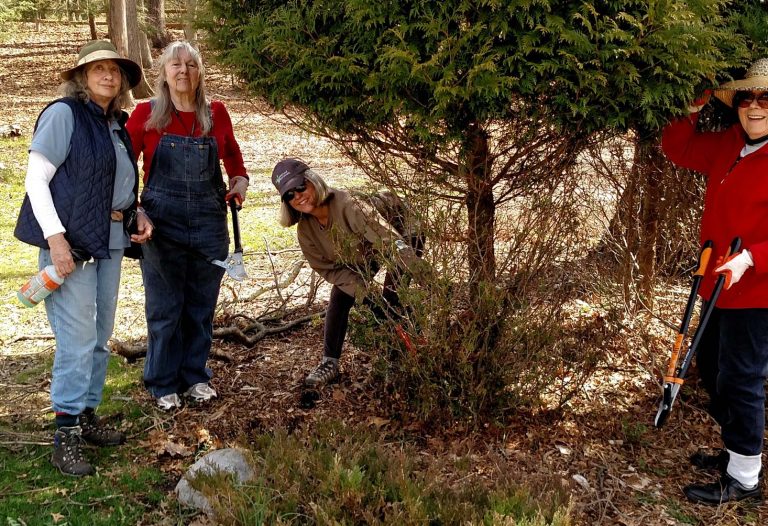As winter arrives, the herds of deer who make Laurelwood Arboretum their home grow hungrier and hungrier. Despite our best efforts, they are devouring many of our prized plantings. Even the plants that are considered to be deer-resistant are eaten, sometimes right to the ground. Deer will eat almost anything when they are hungry. Each deer will consume 6 to 10 pounds of green plants per day. In addition, their droppings and footprints cause damage and destruction in the arboretum.
All summer and fall, we spray repellents on many of our plant collections. The repellents have to be reapplied weekly and after every rain. We vary the sprays so that the deer do not get used to a particular repellent. We estimate the cost of these efforts at $5,000 each season for materials and staff time.
Barriers are another way to protect our plants. Wire enclosures around tree trunks protect the bark from antler rub. To protects groupings of plants from being eaten, including Laurelwood’s valuable azaleas and rhododendrons, we have to install netting that is at least 8 feet tall—otherwise deer will jump right over the netting to reach the plants they like to eat. The netting often needs to be repaired or replaced when the deer break through or knock it down. Netting is expensive to buy and time-consuming to install and maintain, estimated at $7,500 each season. It also detracts from the beauty of the arboretum.
The only long-term solution for preventing widespread damage to our rare and historic specimens of plants and trees is perimeter fencing to keep the deer out of the arboretum. Fencing is a safe, nonlethal, legal, and humane method of deer control. Many nature preserves in New Jersey have reported success with fencing, including Cora Hartshorn Arboretum in Short Hills, Van Vleck House and Gardens in Montclair, Flat Rock Brook Nature Center in Englewood and Garrett Mountain Reservation in Paterson.
Some facts about alternative deer reduction methods:
- The use of poisons to reduce deer populations is illegal.
- Fertility control is costly, can be harmful to the deer and is not 100% effective.
- Trapping and relocating may be performed by state wildlife officials but it has a 21% mortality rate.
- Hunting licenses and permits are available in some communities.
Since 1995, the NJ Department of Environmental Protection, Division of Fish and Wildlife sponsors community-based deer management programs. The Division of Fish and Wildlife reviews and approves applications submitted by municipalities to reduce the number of deer through controlled hunting. Among many other requirements, hunters must pass a shooting proficiency test. Participating communities to date include Princeton, Millburn, Bernardsville, Bridgewater, Mountain Lakes, Summit, Hanover, Harding and Scotch Plains, as well as Essex, Hunterdon, Mercer, Morris, Somerset and Union counties. Venison is donated to local community food banks.
We are seriously concerned about the damage caused by deer in Laurelwood Arboretum and are investigating all possible approaches to the problem.



